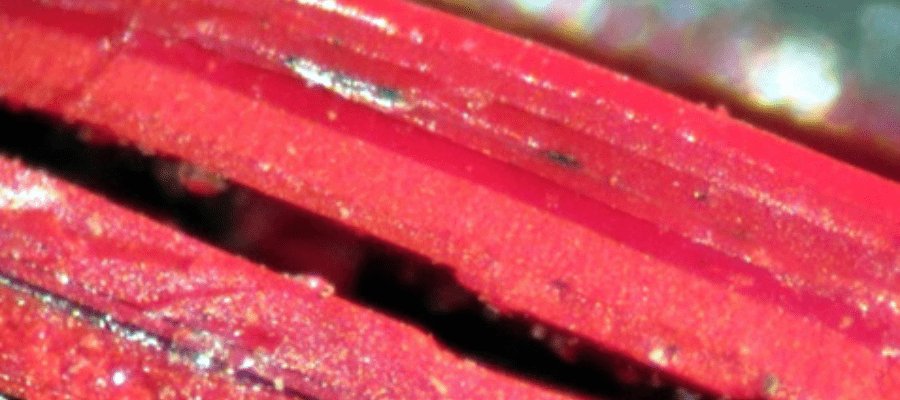Services > Forensic Casework > Paint
Forensic Paint Analysis
See also:
Scene Attendance
Sexual Offence Service
Cold Case Review
Blood Pattern Analysis
Fibres
Fire Investigation
Footwear
Glass
Gunshot Residue
Hair
Tools and Toolmarks
Tyres Tyremarks

The transfer of paint fragments (and associated particulate materials) has the potential to provide effective evidence
The transfer of paint fragments (and associated particulate materials) has the potential to provide conclusive evidence of association between suspects or items (e.g. a damaged window frame at the scene of a burglary, road traffic collisions, criminal damage and assaults).
When a dry painted surface is damaged small fragments of paint can be produced. These fragments can transfer to the clothing or footwear of a person causing the damage or to someone who comes into contact with the paintwork subsequent to its damage.
These fragments can be made up of many different layers and as a result the sequences of layers can be highly characteristic, if not unique. Microscopic fragments or smears of paint can be compared with the suspected origin using a range of microscopic, chemical and spectroscopic methods.
Any loosely adhering fragments will tend to be lost from clothing with the passage of time - the majority of any fragments transferred are normally lost within a matter of a few hours under normal circumstances. Similarly, fragments loosely adhering to any item or implement are not expected to persist for very long if the item is in use.
Therefore, the number of paint fragments found and their location can be a very useful means of indicating when the contact with the source of damaged paint occurred and the extent of the contact in question.
